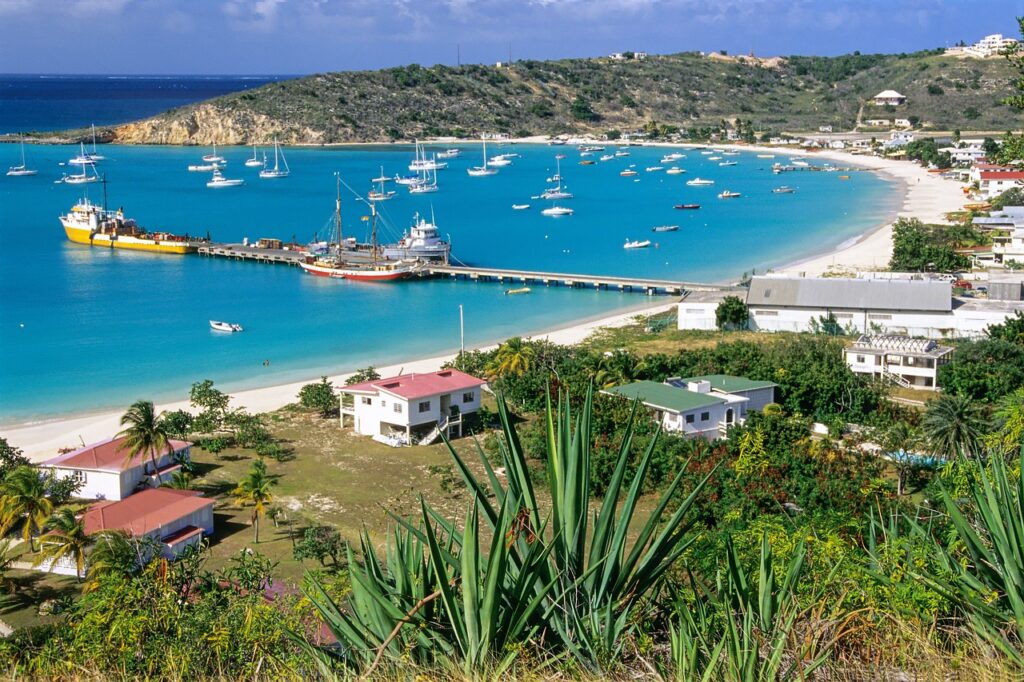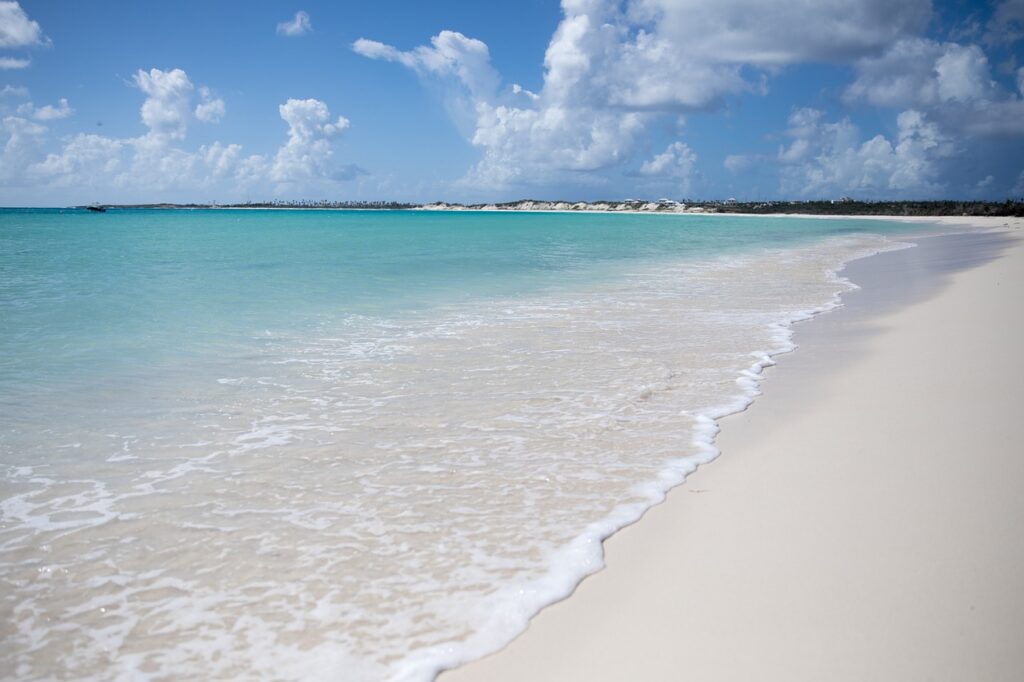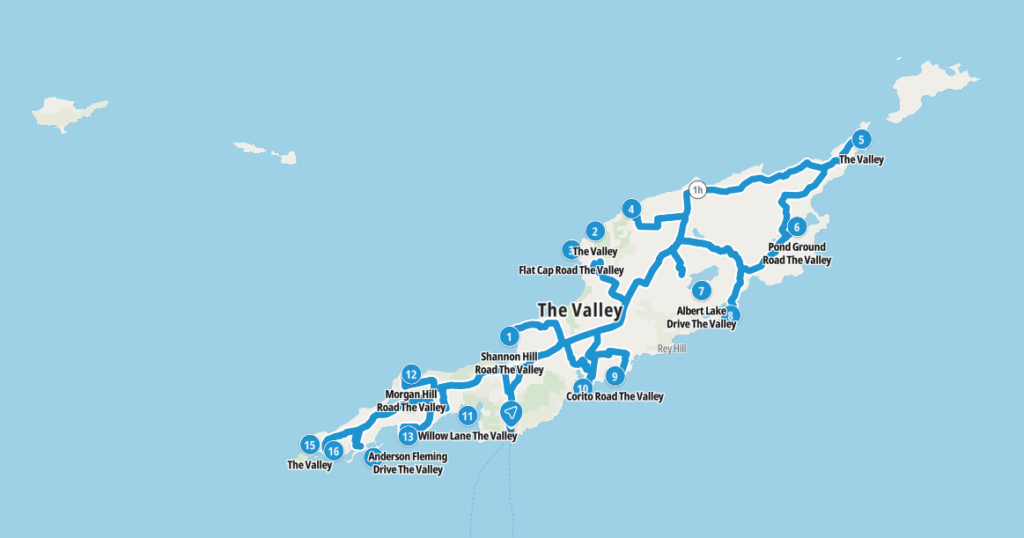Anguilla – Let’s explore here
What’s it like in Anguilla?
Anguilla is a volcanic island located in the Caribbean Sea in North America. As a British Overseas Territory, the British monarch is the head of state. It has a population of around 16,000 people (2021), about one fifth of whom live in the capital city, The Valley.
The island is 16 miles (26 km) long and 3 miles (5 km) wide. It consists of a coral and limestone plain with no mountains. Anguilla’s highest peak is Crocus Hill, at 240 ft (73 m) above sea level. There are several islands and islets surrounding Anguilla, many of which are protected marine areas.
Although Anguilla relies heavily on tourism like many other Caribbean islands, it is also a tax haven.

A bit about the history of Anguilla
Early History and Indigenous Peoples
Anguilla has a history that dates back to pre-Columbian times. The island was originally inhabited by the Arawak and Carib peoples, who lived on the island for centuries before European arrival. These indigenous groups left behind evidence of their settlements, though their culture was largely wiped out after European contact.
European Discovery and Colonial Period
Christopher Columbus is believed to have sighted Anguilla in 1493 during his second voyage to the Americas. However, it was the English who began to settle the island in the 17th century. The island became part of the British Caribbean colonies and was initially used for agriculture, including the cultivation of tobacco and cotton. The island’s early European settlers faced challenges from both the environment and indigenous resistance, but by the late 1600s, Anguilla had become part of the British colonial empire.
French and British Rivalry
Anguilla, like many other Caribbean islands, saw periods of conflict between European powers. During the 17th and 18th centuries, the island was contested by the British and the French. At times, the French took control of Anguilla, but the island was consistently returned to British control. The island’s strategic location made it a site of interest for both powers, but the British ultimately maintained control over it.
Slavery and the Plantation Economy
Like other Caribbean colonies, Anguilla’s economy was based on the labor of enslaved Africans who were brought to the island to work on sugar, cotton, and later, salt plantations. Slavery was abolished in the British Empire in 1834, and this significant change altered the island’s social and economic structure. After emancipation, Anguilla struggled to find a stable economic foundation, but the salt industry, in particular, played a key role in its economy.
20th Century and the Path to Autonomy
In the 20th century, Anguilla remained a British dependency and experienced periods of social and political unrest. One significant event was the 1967 Anguillan Revolution, where residents of the island rebelled against the government of St. Kitts and Nevis, which was seeking to form a federation with the British Caribbean territories. Anguillans did not want to join this federation and sought greater autonomy. In response to the rebellion, British forces were sent to restore order, but the island eventually gained the right to govern itself separately from St. Kitts and Nevis.
Modern Era and Governance
Following the Anguillan Revolution, the island became a separate British Overseas Territory. It has its own government with a high degree of autonomy, though it remains under British sovereignty. Today, Anguilla is a popular tourist destination known for its pristine beaches and luxurious resorts. The island’s economy is primarily based on tourism, offshore banking and fishing.
Cultural Identity and Language
Anguilla, like many Caribbean islands, has a rich cultural heritage that blends African, British, and Caribbean influences. English is the official language, and the island has a strong tradition of music, art, and local cuisine. Despite its small size, Anguilla maintains a distinct identity within the Caribbean region, and its residents continue to take pride in their history of resistance and independence.

Anguilla road trip
Anguilla is our 14th planned stop on our road trip through the islands of the Caribbean. Having explored Saint Martin, our next stop is Saba.
Travelling overland between the islands is quite prohibitive due to the lack of transportation options. Travelling between different island countries via ferry is possible, however, ferries only operate between some islands. Chartering private boats between islands is also possible, although travelling with a car in this way is prohibitive. Flying is another option, although again, flights only operate between some islands.
Map of our road trip through Anguilla

This is a map of our planned route around the island of Anguilla, starting and ending in the ferry port, Blowing Point.
Weather in Anguilla
When is the best time to visit Anguilla?
The best time to visit Anguilla is from December to April. During these months, the islands have 8-9 hours of sunshine per day and rainfall of 1.7 – 3.5 inches (43 – 89mm) per month. The temperature ranges from 23 – 29°C (72 – 84°F).
When is the worst time to visit Anguilla?
The worst time to visit Anguilla is from July to November. During these months, the islands still have 8-9 hours of sunshine per day. However, humidity rises and it rains an average of 3.0 – 5.1 inches (76 – 129mm) per month. The temperature ranges from 24 – 31°C (76 – 88°F).
Hurricane Season in the Caribbean
Hurricane season in the Caribbean runs from June 1 to November 30. Storms tend to be more frequent and more severe in the latter half of the season.
Hurricanes are least likely during December, January and February.
Travel in and around Anguilla
Ferries to other Caribbean island countries from Anguilla
Calypso Ferries, GB Ferries and Funtime Charters travel between Anguilla and Sint Maarten every day, several times per day, including bank holidays, and the journey takes 20-30 minutes.
What’s it like to drive in Anguilla?
They drive on the left hand side of the road in Anguilla. The majority of the roads in Anguilla are in fairly poor condition, with many being sand / mud tracks, and other being a patchwork of filled potholes.
Do you require an international driving permit in Anguilla?
We’ve created a dedicated page to driving abroad, which answers this question, and more, which you might find helpful.
Can you use your UK driving license when driving through Anguilla?
We’ve created a dedicated page to driving abroad, which answers this question, and more, which you might find helpful.
Do I need a carnet de passages to drive in Anguilla?
We’ve created a dedicated page to driving abroad, which answers this question, and more, which you might find helpful.
What are the speed limits in Anguilla?
The speed limit for cars in Anguilla is 30 mph (50 km/h).
What currency do they use in Anguilla?
In Anguilla they use the Eastern Caribbean dollar, although the US dollar is widely accepted. Cash is widely used. The use of credit / debit cards is widely accepted in tourist areas. Travellers cheques are not generally accepted. There are many ATMs in tourist areas, although not all accept foreign issued cards.
You should make yourself aware of the amount that your bank charges you for using credit and debit cards abroad. Often credit cards are cheaper for purchasing items directly, and for withdrawing cash from ATMs.
What language do they speak in Anguilla?
They speak English and Creole in Anguilla.
What time zone is Anguilla in?
Remember, when you’re planning your next trip to take a look at what time zone it’s in.
Do I need a visa to visit Anguilla?
We’ve created a dedicated, more comprehensive page on visas, which you should find helpful. Check it out!
Is wild camping legal in Anguilla?
No, wild camping is illegal in Anguilla.
What plug / socket type do they use in Anguilla?

In Anguilla they use plug / socket type A.
Health issues in Anguilla
Is it safe to drink water in Anguilla?
No, it is not safe to drink tap water in Anguilla. Bottled water is readily available across the country.
What vaccinations are required for Anguilla?
This NHS website is kept up to date with all relevant information on vaccinations in Anguilla.
Phones in Anguilla
What is the country calling code for Anguilla?
The country calling code for Anguilla is +1 264
What are the emergency phone numbers in Anguilla?
- The emergency number for police in Anguilla is: 911
- In Anguilla, the emergency number for ambulance is: 911
- The emergency number for fire in Anguilla is: 911
If you’ve got some useful info that you’d like to share, let us know!
And don’t forget to check out all the other pictures!
